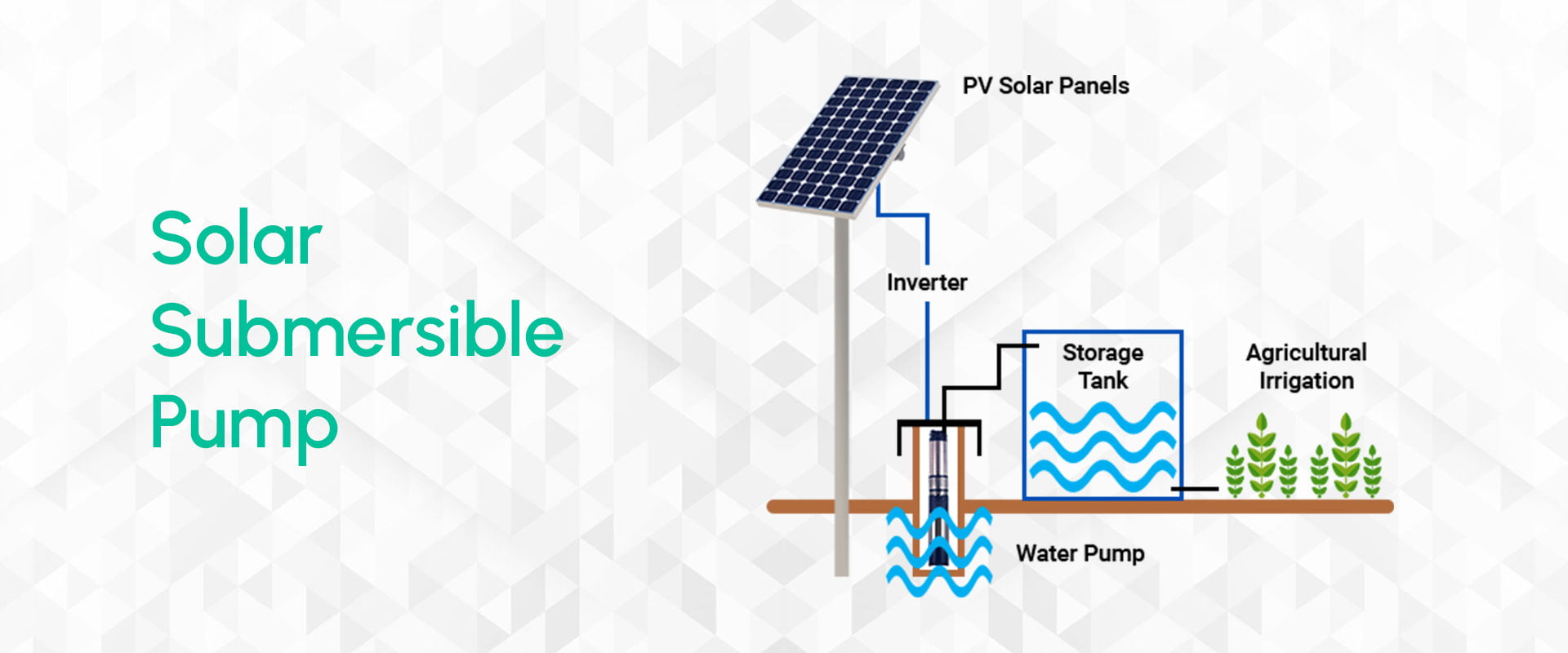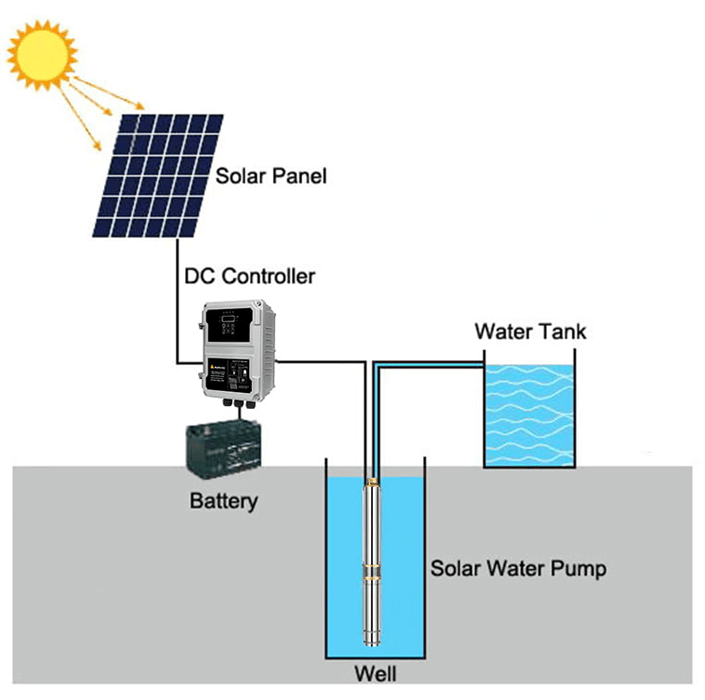- Mail Us : omsolar01@gmail.com, rituraj@omsolar.in


Solar Submersible Pump
The PV (photovoltaic) panels’ electricity or the radiant heat produced by the sun’s heat collection power solar water pumps. A water pump powered by grid energy or diesel is the opposite of this.
Solar energy is used to operate the solar-powered pump. It is made up of a solar charge controller (MPPT), a solar panel array, electrical connections, a breaker/fuse box, a DC water pump, and a water storage tank.
Compared to pumps driven by IC engines or grid energy, solar pumps have a smaller environmental impact. The solar-powered pump is a wonderful technological advancement that may provide isolated locations with water in an environmentally and socially responsible manner. As a result, it is always the preferred economic technology.
Working Principle of Solar Water Pump
The photovoltaic principle is the foundation of how a solar pump operates. PV (photovoltaic) systems capture radiant solar energy and convert it into electricity when a solar pump is operating. The entire system received electricity supply as a result of this.
The PV system’s output of direct current is changed into alternating current by the pump’s inverter, which powers the pump. To achieve the highest power point tracking, these inverters also modify the output frequency and voltage in real-time in accordance with variations in the sunlight intensity.
The water lifting system realises the function of switching the municipal electricity that serves as auxiliary energy for the water lifting system as the sunlight’s intensity declines.
A submersible pump can be installed in huge wells and can lift water up to 650 feet. These pumps work directly to switch off batteries, solar panels, and, in certain situations, electricity, as long as the well water is more than 20 feet above the ground.
When the sun is out, the pump runs continuously, pumping water that is then stored in tanks for later use. Inclement weather prevents the sun from shining, which makes it impossible to pump water. As a result, it’s best to only store water in favourable weather conditions.
These types of solar pumps are typically utilised in undrilled, deep water. These pumps are also used for well pumping, irrigation, pressurisation, pond aeration, residential water systems, and livestock watering. 50m is the highest recommended pump depth.

How to buy an efficient solar water pump?
In recent years, solar water pumps have become less expensive. The following are the things to think about while buying a solar water pump.

Economics

Social justice

Water management

Maintenance

Money accessibility

Operation and installation

Standardization of products and services as well as quality control
With these considerations in mind, solar submersible pump can provide significant national and agricultural socio-economic and environmental benefits. In particular, locations that aren’t connected to the energy grid or where traditional liquid fuel supplies are few, this technique can give dependable power to manage areas at the farm level.
Advantages of Solar Pump

Simple installation

It requires less maintenance

It has low operating costs

Long service life

It can also use in remote areas

They have Strong design

The solar systems work without fuel

These are environmentally friendly pumps

The solar pump has an easy installation

These have easy maintenance and use

Solar water pumps are easy to move

It doesn’t require regular utility power
Solar Pump Applications

These pumps are used to supply water for animals

They are used for irrigation systems

Solar pumps use for water treatment applications

These are also used for the extraction of oil and gas

They are also used to supply water for drinking and cooking purposes

These pumps may also be utilized as booster pumps for pumping fluids over long distance
